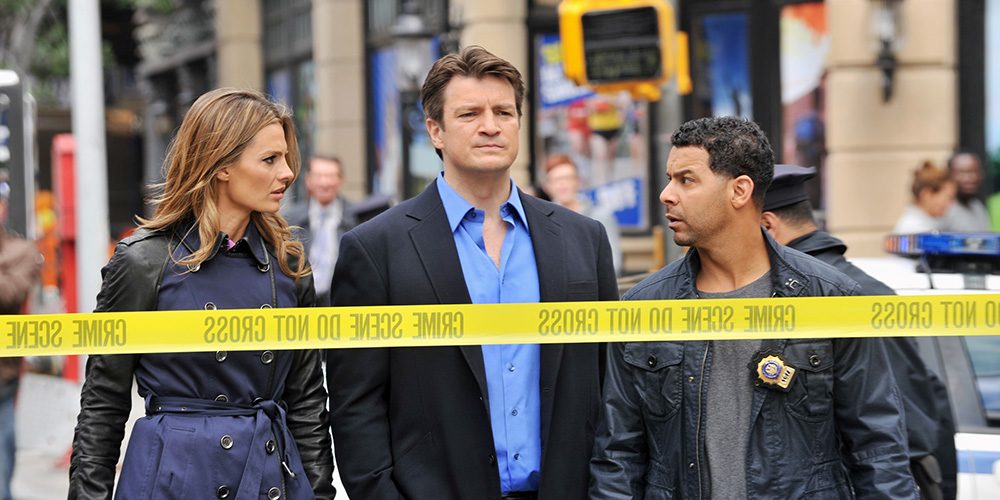The network procedural is something audiences have been putting up with since the birth of television. At the turn of the millennium, American TV doubled down on the genre with the birth of the CSI and NCIS franchises, the latter of which is still alive and well today. But somewhere around the mid-oughts, we took it to another level. It wasn’t enough anymore to just focus on law enforcement and the forensic process. We wanted shows about people who had no business solving crimes in the field.
And thus, the modern procedural was born.
The modern procedural has a few common characteristics:
- There are two leads
- One is a man; the other is a woman (Will they eventually fall in love? Probably!)
- One is a detective or a federal agent; the other is… something else
- One is charismatic and intuitive, with a keen sense of humor and a reckless regard for the rules; the other is… the woman
Arguably, the first TV show in which this trend became evident was Bones, which first aired in 2005. By this point in procedural history, forensic technicians had already been overstepping the boundaries of their job descriptions (CSI, NCIS, Crossing Jordan) and psychics solving crimes already was and would continue to be a TV trope darling (Ghost Whisperer, Medium, The Dead Zone, Psych). Bones may not have originated the trend of the modern procedural, but it popularized it and brought it to the forefront; it wasn’t until The Mentalist (2008) and Castle (2009) that I realized the template had been set and there was no going back.
It’s not hard to see why television audiences took to the trend: Watching cops solve crimes on your screen every week is well and good, but watching ‘ordinary’ people get in on the action makes us feel more immersed, and the characters seem more relatable. While the eccentric leads partnering up with law enforcement aren’t exactly the textbook definition of ordinary people, they’re close enough that TV audiences can imagine themselves in their shoes.
Surround the dual leads with a cast of eclectic supporting characters:
- Some extra cops;
- A hard-ass chief with a heart of gold;
- Sprinkle in a few incorrigible family members of the civilian eccentric;
and TV executives found a template that worked. Copy + paste + repeat every fall and spring season and you have yourself a solid 6-10 seasons of television that loyal viewers and the bored channel flippers alike will tune into every week.
In fact, the format is so banal that recently 2018’s Instinct literally cloned an episode of Bones from nine years earlier—copying scenes almost verbatim—and assumed viewers wouldn’t notice. The creator took to Twitter to apologize, claiming the ripoff was ‘unintentional’ but watching a side-by-side of the episodes in question, I think what he meant to say was ‘I didn’t know about it.’ It is fairly obvious that it was intentional, especially when you take into consideration that the writer credited for the episode of Instinct used to be a producer on Bones prior to the episode’s original airing.
We do not know what the writer’s motive was; what struck me about the pilfered plotline, however, was the realization that it could be lifted and dropped into any of the qualifying shows without skipping a beat. No matter what the lead character’s special profession is—which makes them so indispensable to local law enforcement that they are willing to risk a multitude of legal issues—any one of them could easily have reenacted the same scenes nearly word for word.
However, the lack of originality is not this format’s worst offense. The real question is why the eccentric character must always be the man. From Richard Castle to Patrick Jane to Sherlock Holmes to Cameron Black, why is it always a brilliant male jerk partnered with the more mature female law enforcement officer unwillingly cast in the role of babysitter? Even Bones, which should have been the outlier for allowing the female to be the eccentric civilian tagging along on crime-solving capers, has stripped their female lead of any sort of charm. Her partner, FBI agent Booth, is ‘the funny one’ while Bones herself is the epitome of no-nonsense.
So what is it about the combination of brilliance and whimsy that is off-limits to women? Perhaps viewers find those traits unappealing in a female lead. Undisciplined attitude and smugness are traits that only seem to be tolerated in male characters and the occasional female side character. I’ve encountered this problem even in the comedy genre, where you’d think it would be more widely accepted. As a fan of Fox’s New Girl from the beginning, it was surprising to see viewers turn on the lead (coincidentally played by Bones’ lead Emily Deschanel’s sister Zooey) when she showed signs of whimsical immaturity. Yet viewers see no problem with the unruly antics of Richard Castle or Elementary’s Holmes.
Imagine a female version of these characters assisting a no-nonsense male detective and ask yourself how long viewers would put up with that before condemning her. Hard to imagine, since women are still so often cast in the role of nurturer or mother-figure.
This is not to say that female characters aren’t being explored. They may have some identity or depth, but they are also firmly relegated to the role of ‘buzzkill,’ in order to play the foil to the male lead, which means they are still being defined by their male counterparts. Television producers may think they’re doing women a solid by presenting them as the functionally competent half of a pair, but holding women to higher standards than men is really just another form of sexism rearing its ugly head. The modern procedural is teaching us that it is not okay for women to have a sense of humor, and they still need an unqualified male partner to excel at their job. The cop half of this pairing is also often the vessel through which the consultant character explains their brilliant theories to the audience; it is not a coincidence that the female lead is usually cast in this role.
This trend doesn’t seem to be disappearing any time soon, which leads me to wonder how far TV executives can take this before audiences have had enough. I could attempt to make a more preposterous suggestion, but thanks to 2018’s Deception, in which a magician collaborates with cops to solve crimes, we have already reached maximum farce. Until the next imitable template comes along, network television will continue to give American audiences a disproportionate sense of just how many attractive, young, single lady cops with a troubled past are out there actively solving the nation’s most unusual murders with an unconventional consultant-partner stealing their spotlight.













